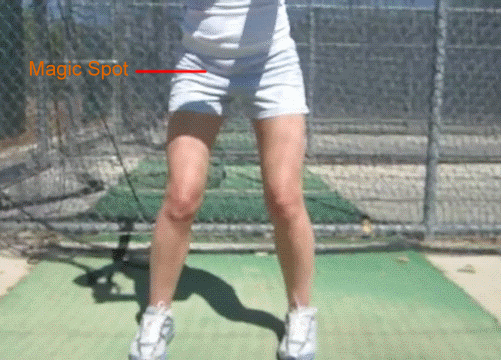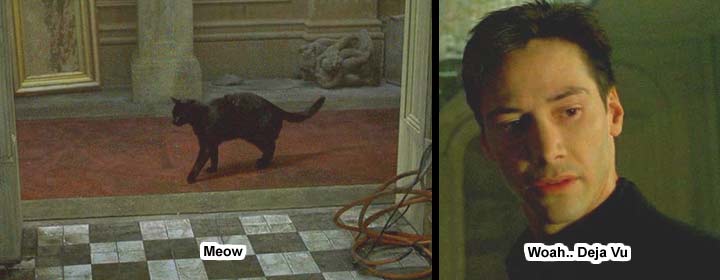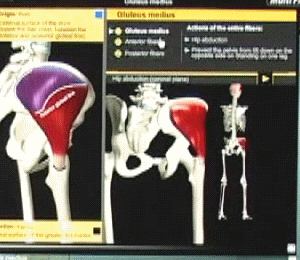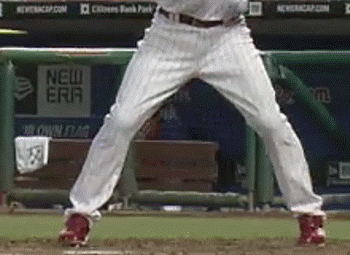My dd is the poster child for why hitters don't want to internally rotate their rear leg to generate force to weight shift. Here's my dd demonstrating what I teach. Beside her is Utley for comparison:


In the above clip of my dd, you are looking at a girl who starts off with her femur internally rotated in her hip socket 32 degrees...normal is about 12 degrees. In addition, her tibia is externally rotated 60 degrees....normal is 15 to 20 degrees. These are exact measurements from her CAT scan. Given these measurements, when she is in her batting stance she starts off with her femur internally rotated 32 degrees, and then has to internally rotate an additional significant amount to offset the external rotation of her tibia...so that her back foot will be square to the plate.
Let me give you a visual of how much her femur is internally rotated in the hip socket in her batting stance. She had surgery in October to fix her leg. The surgery involved sawing her femur, tibia and fibula in half and lining everything up. The surgeon did her femur first. He said that when he aligned her femur her foot was externally rotated so much that it was almost touching the operating table.
In the clip of my dd you'll notice that her thigh turns inwards briefly when she first lifts her front foot. You will see no such action in Utley.....Utley's thigh turns back with his hips when he lifts his front foot to coil. The inward turn of my dd's thigh is actually her leg "buckling" from the excessive internal rotation of her femur in the hip socket.....which causes her knee to want to move down-and-in. NoonTime sees that action and likes it....He likes it so much he doesn't want her to give it up. He actually thinks she gives it up as she turns her hips back, but she doesn't give it up, because she "CAN"T GIVE IT UP"....Her femur is internally rotated in her hip socket by default. As long as she keeps her back foot square to the plate, her femur is internally rotated in her hip socket a ridiculous amount.
The SPIN that NoonTime thinks he sees, is due to the excessive internal rotation of her femur in her hip socket. So the SPIN LOOK that NoonTime sees and doesn't like...is caused by her femur being in a constant state of internal rotation. His solution to get rid of the spin that he sees, is to internally rotate her femur....Which she already excessively does by default. IOW, his prescription to fix the spin that he sees, is to do more of what is causing her to have the look of spin to begin with.
The fact that my dd doesn't spin....and manages to weight shift as good as she does....is a testament to what Ted taught and proof that maintaining pressure at the back foot during transition WORKS. The LOOK of a hint of spin in her swing that I have always seen; is due to the amount of preset internal rotation of her femur in her hip socket. IMO the LOOK of spin that my dd has in her swing is a pretty good argument AGAINST internally rotating the rear leg to weight shift.
I don't now why any coach/instructor would teach a kid with normally aligned legs, to do what my dd does by default....and actually has to try and overcome to get a decent weight shift.
My dd's excessive preset internal rotation of her femur is why I know that the "Internally Rotate to Shift" theory leaks power and is a big dead end.


In the above clip of my dd, you are looking at a girl who starts off with her femur internally rotated in her hip socket 32 degrees...normal is about 12 degrees. In addition, her tibia is externally rotated 60 degrees....normal is 15 to 20 degrees. These are exact measurements from her CAT scan. Given these measurements, when she is in her batting stance she starts off with her femur internally rotated 32 degrees, and then has to internally rotate an additional significant amount to offset the external rotation of her tibia...so that her back foot will be square to the plate.
Let me give you a visual of how much her femur is internally rotated in the hip socket in her batting stance. She had surgery in October to fix her leg. The surgery involved sawing her femur, tibia and fibula in half and lining everything up. The surgeon did her femur first. He said that when he aligned her femur her foot was externally rotated so much that it was almost touching the operating table.
In the clip of my dd you'll notice that her thigh turns inwards briefly when she first lifts her front foot. You will see no such action in Utley.....Utley's thigh turns back with his hips when he lifts his front foot to coil. The inward turn of my dd's thigh is actually her leg "buckling" from the excessive internal rotation of her femur in the hip socket.....which causes her knee to want to move down-and-in. NoonTime sees that action and likes it....He likes it so much he doesn't want her to give it up. He actually thinks she gives it up as she turns her hips back, but she doesn't give it up, because she "CAN"T GIVE IT UP"....Her femur is internally rotated in her hip socket by default. As long as she keeps her back foot square to the plate, her femur is internally rotated in her hip socket a ridiculous amount.
The SPIN that NoonTime thinks he sees, is due to the excessive internal rotation of her femur in her hip socket. So the SPIN LOOK that NoonTime sees and doesn't like...is caused by her femur being in a constant state of internal rotation. His solution to get rid of the spin that he sees, is to internally rotate her femur....Which she already excessively does by default. IOW, his prescription to fix the spin that he sees, is to do more of what is causing her to have the look of spin to begin with.
The fact that my dd doesn't spin....and manages to weight shift as good as she does....is a testament to what Ted taught and proof that maintaining pressure at the back foot during transition WORKS. The LOOK of a hint of spin in her swing that I have always seen; is due to the amount of preset internal rotation of her femur in her hip socket. IMO the LOOK of spin that my dd has in her swing is a pretty good argument AGAINST internally rotating the rear leg to weight shift.
I don't now why any coach/instructor would teach a kid with normally aligned legs, to do what my dd does by default....and actually has to try and overcome to get a decent weight shift.
My dd's excessive preset internal rotation of her femur is why I know that the "Internally Rotate to Shift" theory leaks power and is a big dead end.








